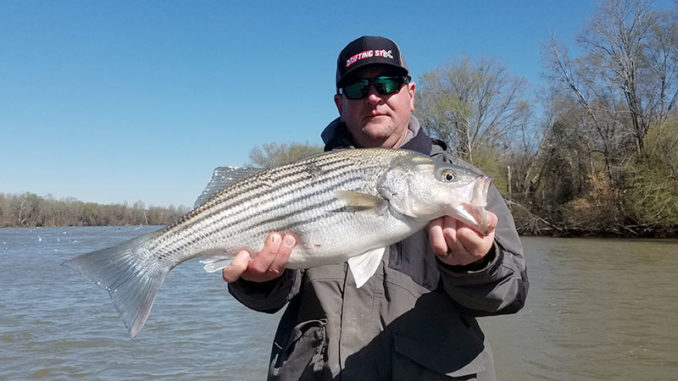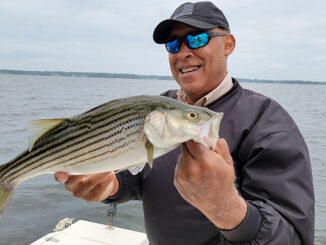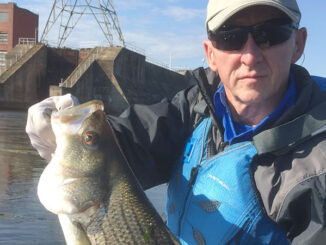
Wateree River stripers are slamming topwater lures
Stripers are running from Santee all the way to the Wateree River Dam throughout March, and they’re feasting up to spawn. That’s good news for anglers, who can catch these fish on numerous lures, including topwater plugs.
“They will bite just about any type of lure when they’re hungry. One of the most effective lures for me and my customers has always been the Cotton Cordell Red Fin. It’s a twitch bait or wake bait that is easy to use and runs just below or right at the surface, depending on how fast you’re reeling,” said Capt. Jason Wolfe of Wolfe’s Guide Service (803-487-3690).
And when it comes to speed, Wolfe said it’s different each day. He lets the fish tell him how fast – or slow – they want it. Either way, he said a steady retrieve is a good place to start.
“You don’t have to do anything special to this lure. You just wind it in kind of steady. You don’t need to jerk it or anything,” he said.
But one thing you do need in order to fish the section of this river that he prefers, is a jet drive outboard.
“You can catch them throughout the length of the Wateree River this month, because they are running up here from Santee all spring. But the area I prefer is above U.S. Hwy 1, and that’s where it is really rocky. In some areas, it looks more like a mountain river than a midlands river. It is full of shoals and they will destroy a propeller quickly,” he said.
Look for current breaks
Despite his warnings, almost every year he sees boats sunken, beached on the rocks, or simply abandoned.
It’s those same rocks though, that help the fishing here.
“They create current breaks and slack water that the stripers love to hide in. They can get in those areas and get a break from the current. And they can ambush prey from those areas as well,” he said.
When you’re in those rocks, dropping an anchor will give you numerous places to cast.
“It’s really difficult to cast anywhere that isn’t just as good as anywhere else once you’re in the shoals. Just look for anything that creates a break in the current, an eddy or any place where slack water meets running current,” said Wolfe. “That’s where you want to cast.”





Be the first to comment